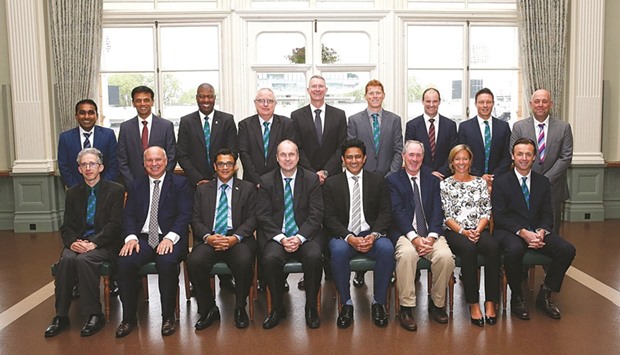India’s Anil Kumble and several other former Test players on an International Cricket Council committee have urged the sport’s law-makers to bring in new restrictions on the size of bats amid concerns over a glut of run-scoring. Following a two-day meeting at Lord’s, the headquarters of the Marylebone Cricket Club (MCC), the ICC cricket committee chaired by Kumble issued a statement saying it wanted MCC, which still has overall global responsibility for cricket’s Laws or rules, to instigate a clampdown.
While there are limitations on bat length (when the lower portion of the handle is inserted it shall not be more than 38in/96.5cm) and width (4.25in/10.8cm at its widest part), none currently exist on depth.
Modern manufacturers have become increasingly skilled at making bats with larger ‘sweet spots’ that do not feel as heavy to pick-up as the blades that were once only the preserve of 1980s power-hitters such as West Indies great Clive Lloyd and England hero Ian Botham.
The balance between bat and ball has become especially loaded against bowlers in limited overs games where the innovations brought in by Twenty20 cricket, allied to increasingly short boundaries, have led to an orgy of run-scoring.
Last year’s 50-over World Cup in Australia and New Zealand witnessed 38 hundreds, nearly one every game, and 463 sixes, an average of one every nine overs. West Indies’ Chris Gayle struck 16 sixes in racing to the fastest one-day international double hundred during a World Cup match against Zimbabwe at Canberra’s Manuka Oval, while New Zealand’s Martin Guptill hit a six measured at 110 metres in the course of his 237 against the West Indies at Wellington.
Thursday’s statement from the ICC cricket committee, whose members include several former Test batsmen in England’s Andrew Strauss, India’s Rahul Dravid and Sri Lanka’s Mahela Jayawardene, said: “MCC sought the committee’s guidance on the desirability of making changes in order to redress the balance between bat and ball.
“The committee received a research paper from MCC citing a wealth of scientific and statistical evidence showing bats have become more powerful in recent years, primarily due to having larger ‘sweet-spots’.”
It added: “The committee’s view was that MCC should strongly consider limiting the dimensions of cricket bats to help achieve a better balance between bat and ball.”
South Africa batting great Barry Richards, speaking during last year’s World Cup, said restrictions were urgently needed to bring modern-day bats into line with the kind of relatively slim models he used in his 1970s heyday.
“The pressing of cricket bats has to be controlled and the thickness in their edges. Maybe there can also be a designated sweet-spot area for bats,” Richards told the Sydney Daily Telegraph.
“Ours used to be about the size of a 50 cent piece but now they are much bigger. These are just a few of my ideas, because batsmen have it too easy.”
The ICC’s cricket committee has recommended that the governing body make the latest British Safety Standard (BSS) helmets mandatory in international cricket.
The committee also said it was of the view that the current playing conditions allow players who are struck on the field of play to receive the best possible medical attention, so there was no need to introduce innovations like concussion substitutes.
Keeping with the safety theme, the committee shot down Cricket Australia’s proposal to allow for a ‘concussion substitute’ to be trialled for two years in first-class cricket. The Australian board had put out the idea of bringing on a substitute in case of a certified concussion to a playing member.
Summing up the proceedings at the meeting, Kumble said, “The main thing that came out of the meeting was regarding Test cricket. The new structure was discussed and everybody was positive and forthcoming in supporting that.
“The committee acknowledged the importance of efforts being made to promote and grow Test cricket, be it through the introduction of meaningful competition structures, better pitches and marketing.”
Among other recommendations was a restructuring of all three formats of the game with dedicated competitions in each format to bring context to all international cricket.
Acknowledging the success of the inaugural day-night Test, played between Australia and New Zealand in Adelaide late last year, the committee noted, “Day-night Test cricket needs to be delivered to a consistently high standard across all member countries if the concept is to be successful, noting that the combination of ball, pitch, lighting levels and environmental conditions needed to allow for an even contest between bat and ball at all proposed day-night Test venues.”

ICC cricket committee members: (back left to right) Mahela Jayawardene, Rahul Dravid, Adrian Griffith, Clive Hitchcock, Craig Ranson, Kevin OBrien, Andrew Strauss, Richard Kettleborough and Darren Lehmann; (front left to right) David Kendix, David White, Ranjan Madugalle, Geoff Allardice, Anil Kumble, Tim May, Clare Connor and John Stephenson, after a meeting in London on Thursday. (ICC)


